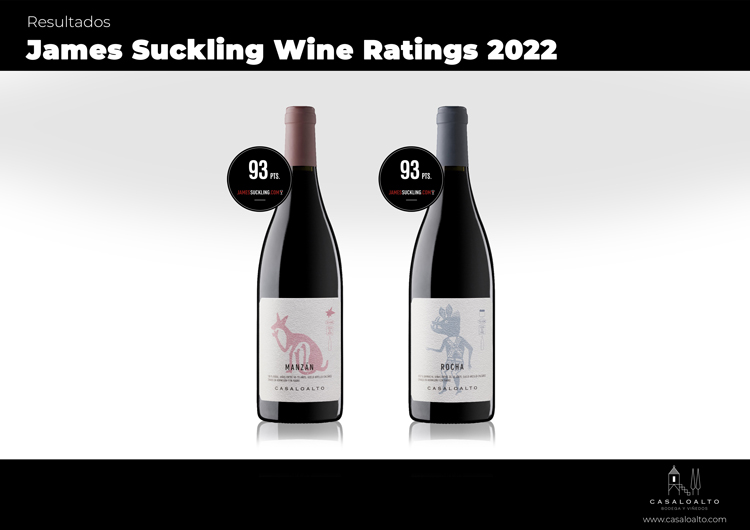Manzán 2020 Bobal and Rocha 2020 Garnacha, Casa Lo Alto’s single-vineyard wines containing the essence of their terroir in each bottle, obtain an extraordinary 93 points from James Suckling.
The influential Californian wine critic has praised two Casa Lo Alto wines and awarded them 93 points – scores only achieved by a limited number of brands worldwide.
James Suckling has been deeply impressed by Manzán 2020, a red made from the Bobal grape, a variety still little known internationally, but with great potential. Given the right care and attention it produces unique wines that reflect its terroir.
Suckling noticed the unique features of this wine, which he describes as having “Aromas of ripe blue fruit, cloves, cinnamon, cocoa and blue flowers. Sleek and polished with medium body and firm tannins. Ripe cocoa-dusted blueberries and violets all over the palate. Juicy and succulent with a flavorful finish.” He recommends it should be drunk now or kept for a few years.

Also achieving the same magnificent score of 93 points is Rocha 2020, the estate’s Garnacha, made with grapes from a single plot at an altitude of 740 metres, from which just 6,000 bottles are produced.
Suckling highlights its “Attractive, perfumed red-fruit character with notes of redcurrants, strawberries, lavender, dried orange peel and light spices. Juicy and vibrant with floral character, fine tannins and notes of Provençal herbs to close. Light and easy to drink with bright, crunchy red-fruit character.”
Various factors make Casa Lo Alto unique, including its undulating terrain, the different orientations of its plots, its altitude of more than 750 metres and its old vines. These vineyards have always produced wines of extraordinary quality. But, in recent years, we have gone a step further in organic farming, with environmentally sustainable viticulture practices, some of which were already being applied.
At Casa Lo Alto, the 150-hectare estate is considered as a whole, where the life going on in the almond groves and pine and oak forests interacts with the vineyard. To achieve this, we promote the biodiversity of the environment and avoid the use of synthetic chemical products so that we maintain an active soil, rich in microfauna. That is what makes each plot unique. Those differences are what we want to seal into each bottle of wine, and we are gradually getting there.


